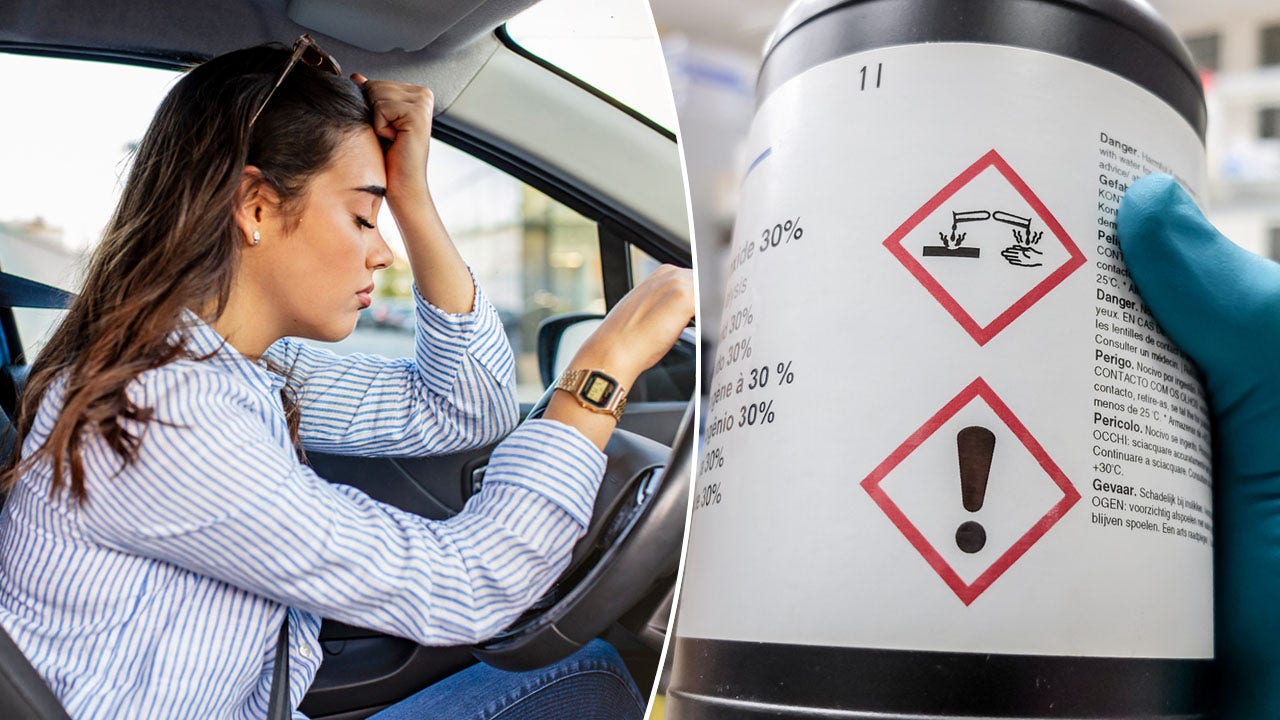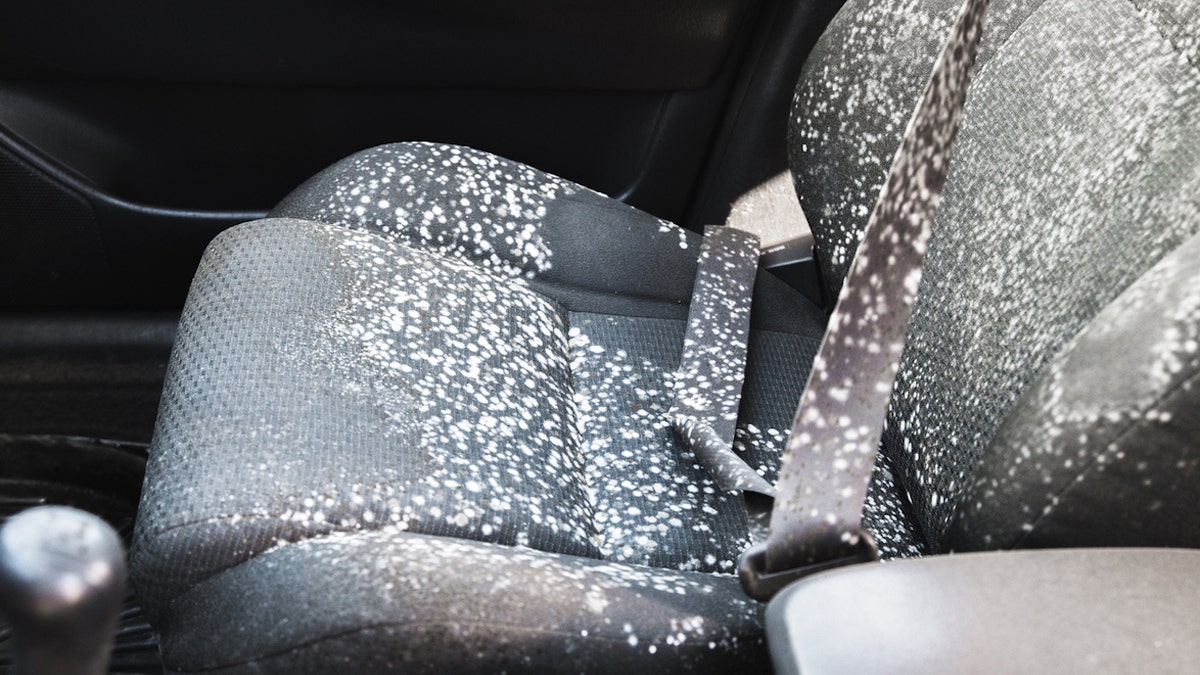Health
For the First Time, There’s a Pill for Postpartum Depression

The Food and Drug Administration on Friday approved the first pill for postpartum depression, a milestone considered likely to increase recognition and treatment of a debilitating condition that afflicts about a half-million women in the United States every year.
Clinical trial data show the pill works quickly, beginning to ease depression in as little as three days, significantly faster than general antidepressants, which can take two weeks or longer to have an effect. That — along with the fact that it is taken for just two weeks, not for months — may encourage more patients to accept treatment, maternal mental health experts said.
The most significant aspect of the approval may not be the features of the drug, but that it is explicitly designated for postpartum depression. Several doctors and other experts said that while there were other antidepressants that are effective in treating the condition, the availability of one specifically shown to address it could help reduce the stigma of postpartum depression by underscoring that it has biological underpinnings and is not something women should blame themselves for.
The hope is that it will encourage more women to seek help and prompt more obstetricians and family doctors to screen for symptoms and suggest counseling or treatment.
“This is a patient population that just so often falls through the cracks,” said Dr. Ruta Nunacs, a psychiatrist with the Center for Women’s Mental Health at Massachusetts General Hospital. “When women are told, ‘You have postpartum depression,’ it’s embarrassing, it is demeaning, it makes them feel like a bad mom.”
She added, “There’s also a lot of stigma about taking antidepressant medication, so that might make this treatment more appealing because it’s really a treatment specific for postpartum depression.”
An estimated 10 to 15 percent of women who give birth in the United States experience depression during pregnancy or in the year afterward. The condition can be accompanied by intense anxiety, shame, guilt, impaired sleep, panic attacks and suicidal thoughts or attempts. And it can make it difficult for mothers to provide their babies with the care, bonding and nurturing that is crucial for healthy development.
The pill, zuranolone, which will be marketed under the brand name Zurzuvae, was developed by Sage Therapeutics, a Massachusetts company that produces it in partnership with Biogen. It is expected to be available after the Drug Enforcement Administration completes a 90-day review required for drugs affecting the central nervous system, Sage said. The companies have not announced a price for the pill.
The only other drug approved for postpartum depression is brexanolone, also developed by Sage and marketed as Zulresso. But brexanolone, approved in 2019, requires a 60-hour intravenous infusion in a hospital, carries risks of loss of consciousness and costs $34,000. Sage says only about 1,000 patients have received it so far.
Taking a pill for two weeks is much easier, not requiring a mother to leave her baby for several days. However, the F.D.A. did require the label to include warnings about possible suicidal thoughts and behavior, sleepiness and confusion. The label will also include a so-called “black box warning” that patients should not drive or operate heavy machinery for at least 12 hours after taking the pill. The pill should be taken in the evening “with a fatty meal,” the agency’s announcement said.
Doctors said zuranolone would not be appropriate for everyone experiencing postpartum depression. For those with mild to moderate depression, talk therapy can work well. Dr. Kimberly Yonkers, chairwoman of the psychiatry department at University of Massachusetts Chan Medical School, said she would probably not recommend zuranolone for patients with longstanding recurrent depression or for “somebody who has a severe episode with a suicidal attempt or hospitalization because you don’t give them a treatment for two weeks and then stop it.”
Appropriate patients, she said, might include “people who have not had a complete response to another antidepressant.”
Dr. Alison Reminick, director of the women’s reproductive mental health program at the University of California, San Diego, said about 10 percent of her patients would be likely candidates. Those would include women experiencing depression for the first time. Such patients are at higher risk of developing bipolar disorder, she said. Although drugs such as Lexapro, Zoloft and other selective serotonin reuptake inhibitors (S.S.R.I.s) work, they can cause mania in those patients, she said.
She would also offer zuranolone to women whose depression was accompanied by anxiety or insomnia because studies suggest it may ease those symptoms.
“I’m a huge fan of S.S.R.I.s,” Dr. Reminick said, but noted that many patients resisted trying medication. “I think this will be much easier to get them to just try this for two weeks.”
Data submitted to the F.D.A. came from two company-funded clinical trials involving about 350 patients. A majority of those receiving zuranolone (72 percent in one trial, 57 percent in another) clinically responded to the treatment after the two-week course, meaning that their scores on a standard depression scale improved by 50 percent or more.
Depression also improved in women receiving the placebo, a common phenomenon in studies of depression treatments, possibly because interacting with medical teams in a trial is itself helpful. But in the group receiving zuranolone, the improvement was consistently greater, by several points, beginning three days after starting the medication. Fifteen days after taking the first pill, zuranolone patients were significantly more likely to have a low enough depression score to be considered in remission.
The effect continued after the patients stopped taking the medicine, throughout the 45 days that they were monitored in the trials. But several maternal mental health experts said longer-term data was needed to determine if patients relapse.
The main side effects of zuranolone were sleepiness and dizziness. Importantly, the trials found no evidence of increased suicidality or withdrawal symptoms after patients stopped taking the drug.
Amy Bingham, 33, of Gibsonville, N.C., received zuranolone in a clinical trial in 2018, about six months after giving birth to her son Benjamin.
Ms. Bingham, who works from home for a call center, had experienced depression as a teenager, but her postpartum depression symptoms were different, including panic attacks, tears and shortness of breath.
“I was very anxious that I would do something wrong, that Ben would get hurt because of a mistake I would make,” she said, “that I wasn’t able to respond to his needs effectively and that because I wasn’t able to, he would be an unhappy baby.”
Sometimes, she said, “I would think I was a terrible mother because I couldn’t soothe my own child.”
Her depression scores recorded in the trial improved by the third day on the medicine and reached remission levels by Day 15, according to data shared with The New York Times.
Under standard procedure in such trials, Ms. Bingham did not know if the pill she took for two weeks was zuranolone or placebo. She said: “I didn’t feel a lot of improvement at first. It did take about a month for me to start feeling some of the benefits.”
But gradually, she said, “I did start to feel calmer.”
“I wasn’t having as many days where I was feeling as tearful,” she continued. Eventually, “I felt that I could enjoy my time with my son.”
Zuranolone contains a synthetic version of a neurosteroid or brain hormone called allopregnanolone, which is produced by progesterone and helps regulate a mood-related neurotransmitter, said Dr. Samantha Meltzer-Brody, director of the Center for Women’s Mood Disorders at the University of North Carolina at Chapel Hill and a lead investigator for the trials of zuranolone for postpartum depression.
During pregnancy, “levels of estrogen and progesterone rise many-fold and then they fall precipitously at the time of childbirth,” she said. She added that, for genetic or other reasons, women who develop postpartum depression seem especially sensitive to that surge and drop-off, which also lowers allopregnanolone levels.
Typically, “increases in allopregnanolone help deal with acute stress,” said Amy VandenBerg, a psychiatric pharmacist at the University of Michigan. Zuranolone might address postpartum depression by essentially replenishing depleted allopregnanolone and targeting the same neurotransmitters to stabilize mood, she said.
Although many cases of maternal depression begin in pregnancy, the pill is not being recommended until after childbirth because it operates on a hormonal pathway and wasn’t tested in pregnant women, Dr. Meltzer-Brody said.
The pill was not tested in women who were breastfeeding their babies. Several doctors said they would inform patients who were considering taking it that there was little data about the drug’s effect on lactating. Some women might be able to pump milk for the two weeks they plan to take zuranolone and resume nursing afterward. Some S.S.R.I.s and other antidepressants have been found to be safe for breastfeeding.
About 15 to 20 percent of women in the trials continued taking other antidepressants they had been on for a while. Experts said it was possible that for some patients zuranolone would be an adjunct medication or would be used as a bridge to longer-term antidepressants.
“It’s not the only treatment that’s helpful for postpartum depression, but the innovation and the excitement about this is that it’s specific, designed to target postpartum depression based on potential biological causes,” said Wendy Davis, executive director of Postpartum Support International, a nonprofit that raises awareness and provides resources for those experiencing maternal mental health issues. “It gives the understanding that there is a biological reason for what you’re feeling right now,” she said, adding “It is not your fault.”
The fact that there’s a medication prescribed for a mother’s depression might prompt family members to “give recognition to it and increase how much help they give mom,” Dr. Reminick said.
“If it gets more people into treatment, that’s wonderful,” Dr. Nunacs said. “If it doesn’t work, they’re connected with providers and we can try other things. So it opens a door for treatment that has been hard to open in the past.”

Health
Introducing Our Product Reviews Team, and How We Review | Woman's World

Sign Up
Create a free account to access exclusive content, play games, solve puzzles, test your pop-culture knowledge and receive special offers.
Already have an account? Login
Forgot your password?
Get back to the Sign In
Use left and right arrow keys to navigate between menu items.
Use escape to exit the menu.
Health
What You Should Know About the Military Diet: Experts Weigh In | Woman's World

Sign Up
Create a free account to access exclusive content, play games, solve puzzles, test your pop-culture knowledge and receive special offers.
Already have an account? Login
Forgot your password?
Get back to the Sign In
Use left and right arrow keys to navigate between menu items.
Use escape to exit the menu.
Health
Could your car make you sick? Study highlights potentially cancerous toxins in vehicles

Americans may be breathing in cancer-causing chemicals while driving, recent research suggests.
A study published in the journal Environmental Science & Technology has sparked discussions about the potentially harmful toxins that could be lurking in the cabins of vehicles.
“Certainly the indoor air quality can cause health symptoms,” Dr. Ken Speath, M.D., the division chief and medical director for occupational and environmental medicine at Northwell Health on Long Island, New York, told Fox News Digital.
‘FOREVER CHEMICALS’ FOUND IN US DRINKING WATER, MAP SHOWS ‘HOT SPOTS’ OF HIGHEST LEVELS
It is important to be mindful of what you’re breathing in at home, at the office, at school and even in cars, according to Speath, who was not involved in the study.
“There can be situations where levels of harmful chemicals get high enough to potentially cause health harms,” he said.
Americans may be breathing in cancer-causing chemicals while they are driving, recent research suggests. A study published in the journal Environmental Science & Technology has sparked many discussions. (iStock)
“A car is a closed small space — so whatever is in the air is certainly going to be breathed in.”
Research reveals ‘harmful chemicals’
The peer-reviewed study looked at 101 owned vehicles in the U.S., model year 2015 or newer.
The researchers concluded that harmful flame-retardant chemicals — including those suspected of potentially causing cancer and some neurological issues — may be polluting the air inside vehicles.
DRIVING DANGERS: 9 TOP DISTRACTIONS THAT CONTRIBUTE TO ACCIDENTS, ACCORDING TO EXPERTS
“Flame retardant chemicals, which are intentionally added to vehicle interiors to meet flammability standards, are released into the cabin air from the materials to which they were applied,” lead author Rebecca Hoehn, a scientist at Duke University, told Fox News Digital.
“People in these vehicles may be exposed to these chemicals.”
Seat foam was the only material the researchers measured, Hoehn said, but other interior materials could also contain the chemicals.

The researchers concluded that harmful flame-retardant chemicals — including those suspected of potentially causing cancer and some neurological issues — may be polluting the air inside vehicles. (iStock)
“Considering the average driver spends about an hour in the car every day, this is a significant public health issue,” Hoehn warned.
“It’s particularly concerning for drivers with longer commutes, as well as child passengers, who breathe more air pound for pound than adults.”
The chemicals detected in the car cabins included a flame retardant called tris (1-chloro-isopropyl) phosphate (TCIPP), which is currently being investigated as a potential carcinogen by the U.S. National Toxicology Program.
“Considering the average driver spends about an hour in the car every day, this is a significant public health issue.”
Other flame retardants — tris (1, 3-dichloro-2-propyl) phosphate (TDCIPP) and tris (2-chloroethyl) phosphate (TCEP) — were also detected.
These are “two Californian Proposition 65 carcinogens linked to neurological and reproductive harms,” according to a press release.
Higher concentrations of the flame retardants were found during warmer weather.
“We found that the same cars, sampled in both winter and summer, had higher concentrations of flame retardants in the cabin air during the warm summer months,” Hoehn told Fox News Digital.

Flame retardants are added to vehicles to meet the National Highway Traffic Safety Administration Federal Motor Vehicle Safety Standard, which mandated their use in the 1970s. (iStock)
Flame retardants are added to vehicles to meet the National Highway Traffic Safety Administration Federal Motor Vehicle Safety Standard (FMVSS 302), which mandated their use in the 1970s, the release stated.
Flame retardants have been the “focus of concern for some time,” Speath told Fox News Digital.
More information is needed to determine the health risks these chemicals pose in humans, he said.
THESE MEDICATIONS COULD MAKE DRIVING DANGEROUS, THE FDA WARNS
“A number of these have been demonstrated in studies to have health harms in animals,” he said.
“That doesn’t necessarily mean that would be true for humans, but it raises that possibility, so we need to study these chemicals more in relation to their effects on humans.”

Higher concentrations of the flame retardants were found during warmer weather, the researchers said. (iStock)
Emanuela Taioli, M.D., PhD, the director of the Institute for Translational Epidemiology at Icahn School of Medicine at Mount Sinai in New York City, was also not part of the study, but shared her reactions.
“This is a very relevant finding, since it may prompt changes in cars’ upholstery, as well as in other parts of the car where there is foam,” she told Fox News Digital via email.
“We also want to know more about this finding and monitor whether it is replicated by other investigators.”
Other sources of toxins
Stephen Showalter, a home inspector and indoor environmental air consultant with Showalter Property Consultants in Maryland, said he typically interviews clients about their history of illness, then tests for potential sources of sickness in buildings, cars, RVs and boats.
Mold is a common culprit when it comes to health issues triggered by one’s environment, he said in an interview with Fox News Digital.
TOXIC CHEMICAL POISONING: HAVE YOU BEEN AFFECTED? HOW TO KNOW
Dr. Daniel Johns, a member of the International Society of Environmentally Acquired Illnesses and a chiropractor who practices in Annapolis, Maryland, echoed Showalter’s concerns about mold-related health issues.
Johns also cautioned that cars can be a daily source of mold exposure.
“Any water that leaks from a window, sunroof or convertible can get into the carpet and cause mold growth,” he said during an interview with Fox News Digital.

Mold is a common culprit when it comes to health issues triggered by one’s environment, according to an environmental expert. (iStock)
“Mold can start growing on a wet surface within 24 to 48 hours.”
For families with small children, spilled sippy cups could play a role when it comes to mold in cars, Johns warned.
“The water seeps into the upholstery and doesn’t get noticed or properly dried out, and the whole seat can become moldy,” he said.
“Mold can start growing on a wet surface within 24 to 48 hours.”
“Every time you sit on the seat, it releases a mold spore cloud into the car. Once that happens, you can’t clean it away. The upholstery must be removed and replaced.”
The impact of these potentially harmful pollutants can vary from one person to the next, experts told Fox News Digital.

For families with small children, spilled sippy cups could play a role when it comes to mold in cars, an expert warned. (Kids and Car Safety)
People metabolize chemicals and toxins in different ways, according to Taioli.
“Metabolism happens through enzymes that the body produces,” he said.
“Each of us has a different genetic profile that defines our metabolic capacity. As a consequence, the same amount of toxin may be metabolized better/faster by some, and worse/slower by others.”
Tips for ensuring safe interiors
While further research on car-borne chemicals is needed, experts say people can take measures to limit exposure.
“People may be able to reduce their exposure by ventilating their cars,” Hoehn advised.
“For example, rolling down the windows to let out contaminated air, or pulling in fresh air with climate control systems, should reduce concentrations.
“Ultimately, reducing the amount of flame retardants added to vehicles in the first place would provide the greatest reduction in exposure risk.”
Controlling your vehicle’s cabin temperature may also reduce exposure, she added.
“Parking in a garage or shade instead of full sun may reduce the cabin temperature and limit the extent of flame retardant release,” Hoehn said.
The researchers also called for action from regulatory agencies and vehicle manufacturers.
CLICK HERE TO SIGN UP FOR OUR HEALTH NEWSLETTER
“Ultimately, reducing the amount of flame retardants added to vehicles in the first place would provide the greatest reduction in exposure risk,” Hoehn noted.
“If flammability standards for vehicles could be revised to meet fire safety guidelines without the use of added flame retardants, risk of flame retardant exposure from personal vehicles could be greatly reduced.”

To prevent mold in a vehicle, experts recommend keeping your windows up when it rains or snows to prevent water from permeating the carpet or fabric. (iStock)
Having your car’s air quality and surfaces tested is one way to reduce the risk of exposure to allergens, toxins and chemicals, experts told Fox News Digital.
To prevent mold in a vehicle, Showalter recommends keeping your windows up when it rains or snows to prevent water from permeating the carpet or fabric.
He also cautioned about leaky air conditioners, which can foster mold growth in vehicles, and about leaving wet items in the car.
Lastly, before buying a used car, he said it is important to check the vehicle’s history to make sure it doesn’t have flood damage, which can lead to mold and other issues.
If you think you are experiencing illness due to chemical exposure in your car, home or office, it’s best to see a health care professional to discuss your symptoms.
Fox News Digital reached out to several major car companies for comment.
For more Health articles, visit www.foxnews.com/health.
-

 World1 week ago
World1 week agoIndia Lok Sabha election 2024 Phase 4: Who votes and what’s at stake?
-

 Politics1 week ago
Politics1 week agoTales from the trail: The blue states Trump eyes to turn red in November
-

 World1 week ago
World1 week agoBorrell: Spain, Ireland and others could recognise Palestine on 21 May
-

 Politics1 week ago
Politics1 week agoFox News Politics: No calm after the Stormy
-

 World1 week ago
World1 week agoUkraine’s Zelenskyy fires head of state guard over assassination plot
-

 Politics1 week ago
Politics1 week agoUS Border Patrol agents come under fire in 'use of force' while working southern border
-

 World1 week ago
World1 week agoCatalans vote in crucial regional election for the separatist movement
-

 News7 days ago
News7 days agoSkeletal remains found almost 40 years ago identified as woman who disappeared in 1968



/cdn.vox-cdn.com/uploads/chorus_asset/file/25430225/247065_Vergecast_Gaming_Senses_Smell_SHaddad.png)









